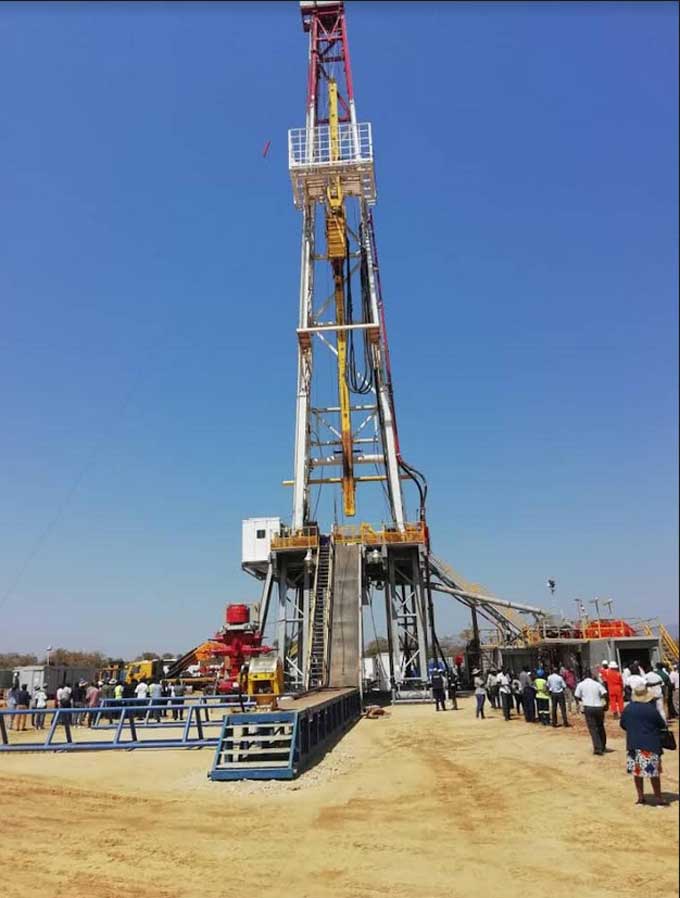
BY SHAME MAKOSHORI The government has laid out a multi-pronged approach to help Zimbabwe’s mines scale up production as industry executives indicated that the scale of capital required to bolster operations was too huge for domestic lenders.
More than US$30 million in fresh funding was estimated to be destined for mines immediately from sources outside the banking sector as mining executives digested the industry’s future during the Chamber of Mines of Zimbabwe’s annual mining conference in Victoria Falls.
State-run gold buyer, Fidelity Printers and Refiners said loans of at least US$20 million would be injected into sector operators while the Ministry of Mines and Mining Development said it was deploying its share of special drawing rights (SDRs) allocated to Zimbabwe by the International Monetary Fund (IMF) to recapitalise the mining industry.
Bankers also said they were ready to fund production.
Onesimo Mazai Moyo, permanent secretary in the Ministry of Mines, told delegates that Treasury had released US$10 million out of the US$961 million IMF package, which will soon be channelled to mines.
Moyo said government was working out a deployment strategy with banks to determine how SDRs will flow into mining companies.
SDRs will not be free money, but government says it will charge competitive rates to borrowers in order to revive hundreds of struggling companies across sectors.
“The ministry was allocated US$10 million from the SDRs and we are working with Treasury and banks to make sure this money is lent to the mining industry,’ Moyo told delegates.
- Chamisa under fire over US$120K donation
- Mavhunga puts DeMbare into Chibuku quarterfinals
- Pension funds bet on Cabora Bassa oilfields
- Councils defy govt fire tender directive
Keep Reading
“Beneficiaries will include small-scale miners because we want inclusive growth. We are establishing a facility with banks, because they are skilled in that area,” the Mines ministry official added as he unveiled a new plan to deploy special offficers across provinces to act as business development advisors to small scale miners.
“We will deploy extension officers to provinces. They will be more like business development officers.”
Fidelity boss Peter Magaramombe said his firm would add incentives to loans to drive gold output to the projected 35 tonnes this year.
The sector produced 31 tonnes last year.
“We are targeting US$20 million in loans to gold producers in 2022,” Magaramombe said.
“We have seen that when we provide incentives production improves and it declines during those years when we don’t provide incentives.”
Zimbabwe’s mines estimate that they require at least US$5 billion to return to full production following years of economic turmoil marked by foreign currency shortages and exchange rate volatilities.
The Gold Producers Association said the bullion mines alone required US$1 billion in fresh capital, which domestic banks were ill equipped to finance.
Qhubeka Nkomo, president of the association, told the conference that even if such capital was available in Zimbabwe, interest rates were too high to run sustainable mining operations.
Nkomo suggested that firms must be given the greenlight to secure loans using their mineral reserves as collateral.
Finance minister Mthuli Ncube laid out a solid SDRs spending plan soon after the funding was announced in October last year, saying the windfall would be guarded by three top bankers, who will report to President Emmerson Mnangagwa monthly.
Sectors hardest hit by Covid-19-induced lockdowns would receive maximum attention as Ncube and his team work to revive an economy that slowed by 4% as the pandemic ripped through the country last year, Ncube said.
The US$961 million was part of a US$630 billion injected by the IMF into the global economy to restart economies after countries came under pressure from pandemic curbs from 2020.
Zimbabwean firms offloaded 500 000 workers between March 2020 and April 2021 as a result of the health crisis, according to the World Bank.
Write downs in the key tourism industry hit US$1 billion, the biggest such fall in 40 years.
But as Harare struggles to access international credit to reboot its stuttering economy due to its high risk profile, the IMF’s intervention came as a timely boost.











